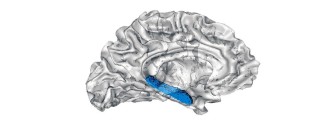In a study published in the September 2014 issue of the scientific journal Cortex (number 58), Pr. Gianfranco Dalla Barba of the Brain and Spine Institute – Institut du Cerveau - ICM – and his collaborators demonstrated that “confabulators mistake multiplicity for uniqueness” in other words, they replace memories of single events from the past with memories of routine events. In an experimental study using a recognition memory task, the researchers confirmed, for the first time, a phenomenon, up till now only known and described clinically. This study greatly advances the diagnosis of confabulation and distinguishes it from other types of memory disorder in patients suffering from organic amnesia.
Confabulation accompanies certain forms of organic amnesia – consequences of brain lesions (neurological disease, brain traumatisms, tumors, episodes of anoxia or ischemia…), unlike other types of amnesia of psychogenic origin (stress, depression…). A distortion of memory, generally confused with mythomania (a kind of pathological imagination with repeated lying, a disorder of which the patient is partially aware), confabulation refers to an imaginary story that the subject more or less believes.
Following their studies on the hippocampus and the implication of this region of the brain in temporal memory – notion of the personal past, present and future (“The Hippocampus, a time machine that makes errors“) – the group of Pr. Dalla Barba (Institut du Cerveau - ICM and Department of Life Sciences, Università Degli Studi, Trieste – Italy) and their collaborators (IM2A – Pitié-Salpêtrière, Paris ; Centro Medico di Foniatria, Padoua, Italy) go further in their understanding of the mysteries of memory on the cognitive level.
According to the recent results published in Cortex, confabulators report routine events and habits (multiple or repeated events) as if they were unique (specific events that occurred in the past), having lost, apparently, the capacity to discriminate between the two. This dramatic pathological condition observed in confabulators results from the disturbance of basic biological mechanisms that underlie the organisation and discrimination of events, knowledge and information.
Serra et al., Cortex, 2014 – Conception du test “Multiple-Unique” de mémoire de reconnaissance. Le test consiste en une tache d’encodage (Encoding) avec le passage d’une série d’images soumises 4 fois aux participants, suivie d’une tâche de reconnaissance ultérieure (Recognition) ; entre les deux, les participants effectuent une tâche d’interférence (interfering task). La phase d’encodage inclue 24 items (4 items qui apparaissent 1 fois, 4 items qui apparaissent 4 fois chacun et 4 éléments de la mémoire tampon); pendant cette phase les participants effectuent un jugement “vivant / non vivant”. Au cours de la phase de reconnaissance, les images précédemment présentées apparaissent en un exemplaire en même temps qu’un nombre équivalent de nouvelles images. Pour chaque item trois réponses différentes sont possibles : vu une fois, vu plusieurs fois, jamais vu. Les participants souffrant de confabulation disent avoir vu une seule fois des items qui ont été présentés plusieurs fois. © © Cortex – ELSEVIER
Crédit photo Hippocampe gauche en bleu sur une vue médiale oblique de cerveau © Inserm/CEA/Houenou, Josselin
Sources
https://www.sciencedirect.com/science/article/abs/pii/S001094521400197X – Serra et al., Cortex – Volume 58, September 2014.
https://www.sciencedirect.com/browse/journals-and-books - ELSEVIER : When true memories are replaced by habits







